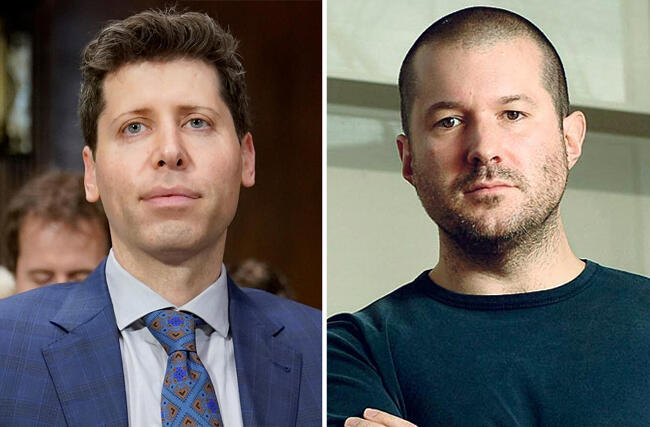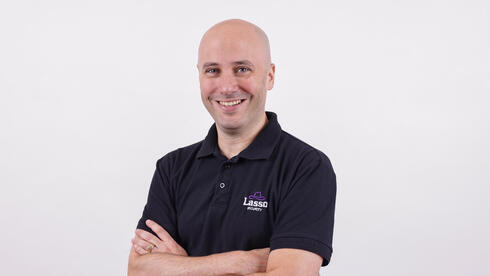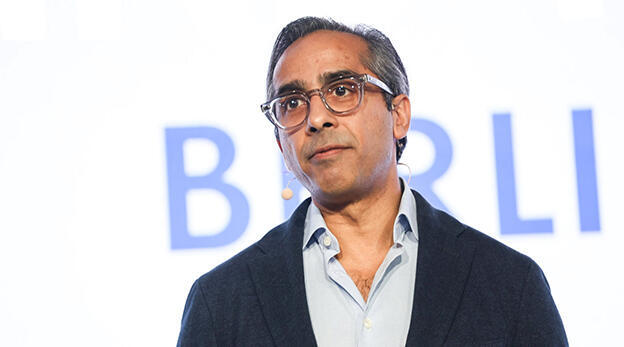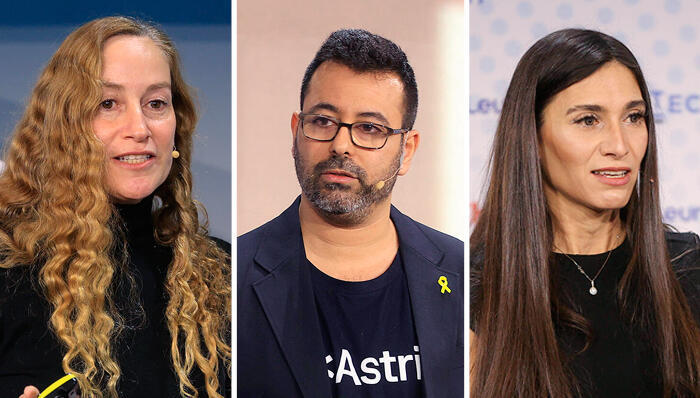
OpenAI wants Jony Ive to do for AI what he did for the iPhone
Altman turns to Apple’s design legend to make artificial intelligence feel intuitive, invisible, and essential.
OpenAI has acquired the startup of legendary Apple designer Jony Ive to jointly build an AI “companion device” intended to become an integral part of everyday life. The company hopes to sell 100 million units of the device upon launch, OpenAI CEO Sam Altman told employees on Wednesday, according to a report in The Wall Street Journal. The device, the details of which remain under wraps, is expected to launch by the end of next year.
OpenAI announced that it had acquired Ive’s design firm, LoveFrom, in an all-stock deal at a valuation of $6.4 billion. According to The Wall Street Journal, Altman told employees that the acquisition represents ““the chance to do the biggest thing we’ve ever done as a company here”, a significant claim, considering OpenAI sparked the current AI revolution in 2022.
Altman gave employees a few clues about the upcoming device. He said it will be fully aware of a user’s environment and daily life, non-intrusive, and small enough to fit in a pocket or sit on a desk. He described it as a “third core device” alongside the MacBook Pro and iPhone.
Earlier reporting by the Journal noted that the device will not be a smartphone. Altman and Ive hope it will help people reduce screen time. Altman said it also won’t be a wearable, like smart glasses, citing Ive’s skepticism of such devices. Ive described the project as “a new design movement.” Altman emphasized that the device is essential to OpenAI’s long-term success and could help prevent rivals from copying its products before they’re ready.
Altman reportedly has bold expectations: “We’re not going to ship 100 million devices literally on day one,” Altman said, before noting that they will ship the devices “faster than any company has ever shipped 100 million of something new before.”
The ambition evokes memories of Steve Jobs, whose legacy looms over this partnership. Ive, one of Jobs’ closest collaborators until the Apple co-founder’s death in 2011, said working with Altman reminded him of working with Jobs. “The way that we clicked, and the way that we’ve been able to work together, has been profound for me,” he said in the meeting.
OpenAI and LoveFrom have worked together for over a year and a half, during which the vision for the secret device began to take shape. Initially, the idea was for Ive’s firm to design and market the hardware independently, using OpenAI’s technology. But Altman concluded that for the product to succeed, the two companies needed to formally join forces. “We both got excited about the idea that, if you subscribed to ChatGPT, we should just mail you new computers, and you should use those,” Altman said.
Altman and Ive also realized that existing devices were incompatible with the next-generation experiences OpenAI wants to offer. People still use ChatGPT in an old-fashioned way, logging onto a laptop, typing queries, and waiting. “It is not the sci-fi dream of what AI could do to enable you in all the ways that I think the models are capable of,” Altman said.
Based on Altman’s description, we asked ChatGPT to imagine the device. It envisioned a product called Ora: a small, sensor-packed gadget designed to listen, observe, and anticipate user needs. The imagined Ora would be activated by voice rather than touch, deeply integrated with OpenAI’s models, and capable of delivering proactive assistance and deeply personalized experiences.
Potential use cases could include: managing daily schedules, drafting correspondence, summarizing meetings, automating routine tasks, providing real-time insights, reminding users of important interactions, acting as a creative sounding board, and even improving interpersonal communication by filtering and managing digital interactions.
Whether or not OpenAI’s actual product resembles this vision, one thing is certain: launching a new hardware platform is a high-risk, high-reward gamble. If successful, the company could create a new category of computing, like Apple did with the iPhone. But even veteran founders face huge challenges. Humane, a startup by former Apple employees, failed to gain traction with its wearable AI pin and shut down earlier this year.
Unlike Apple or Google, OpenAI has no track record in hardware and remains far from profitability. The company told investors last fall that it doesn’t expect to turn a profit before 2029, and it could lose $44 billion by then. Building consumer hardware requires not just vision, but capital, supply chains, and years of experience. Apple and Google are still better positioned to lead in AI devices.
Still, a scenario in which OpenAI, strengthened by Ive’s design genius, beats the incumbents to market with a revolutionary device isn’t out of the question.















